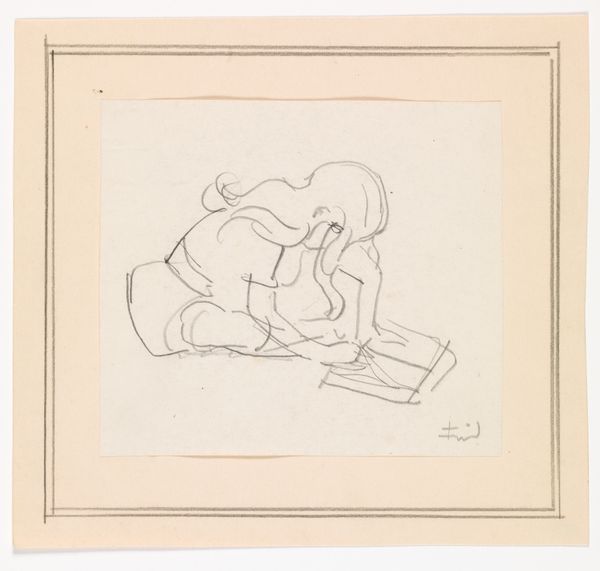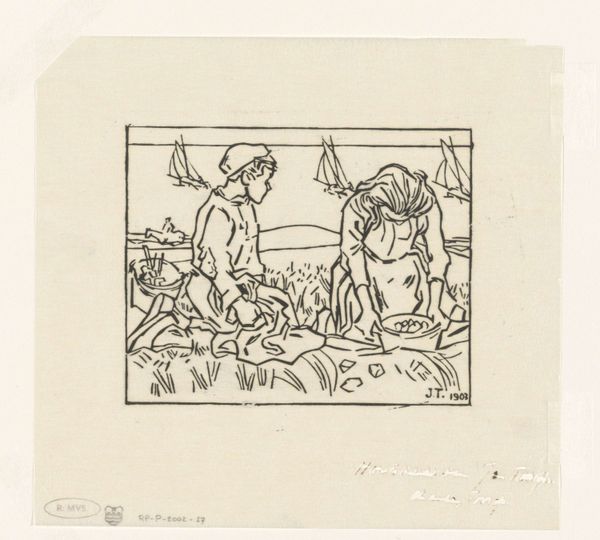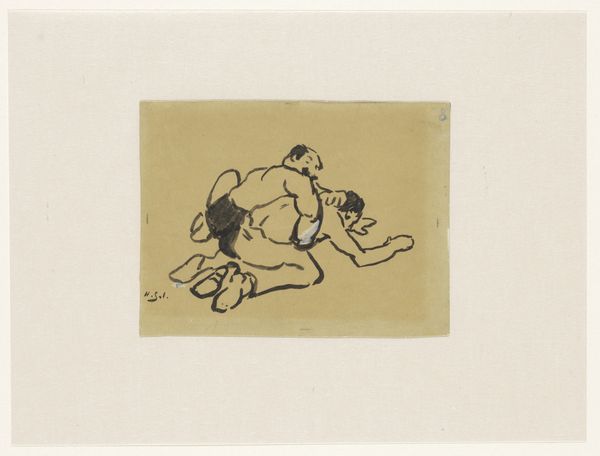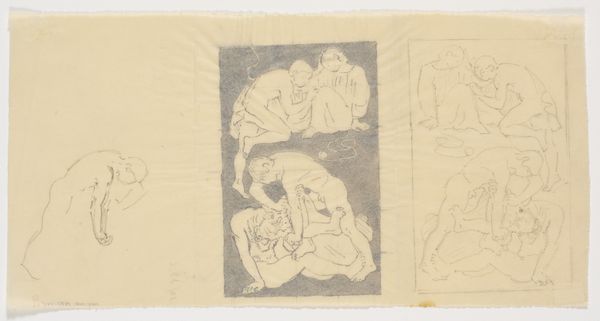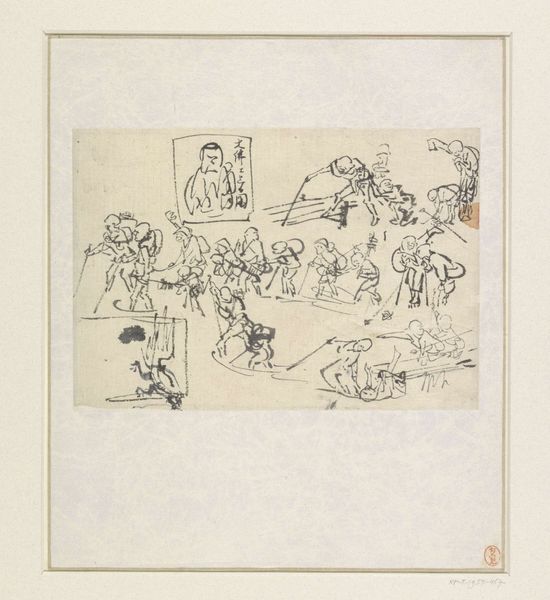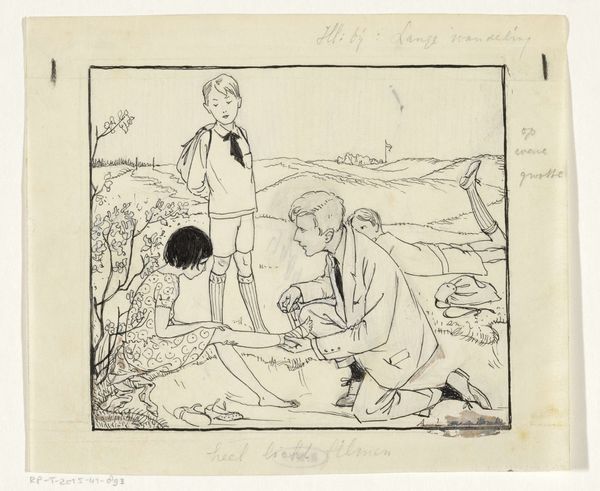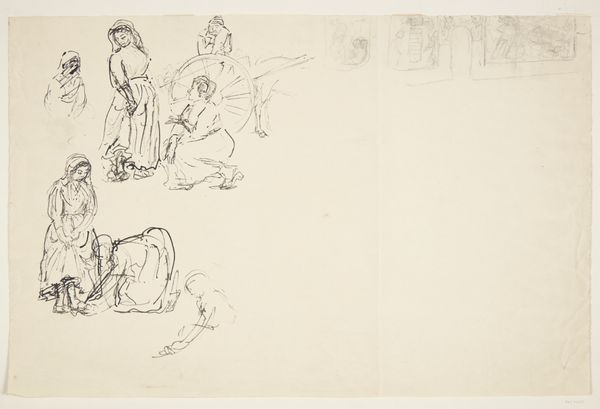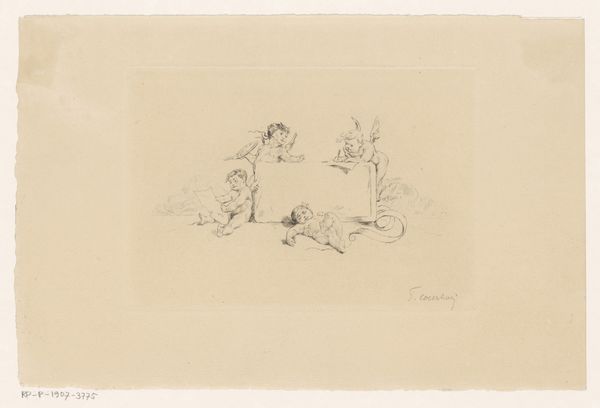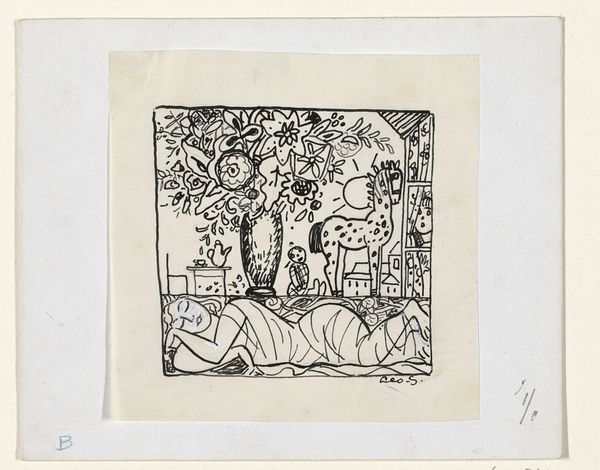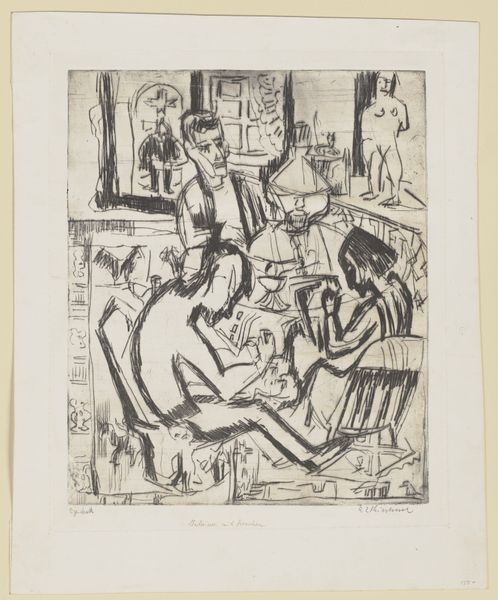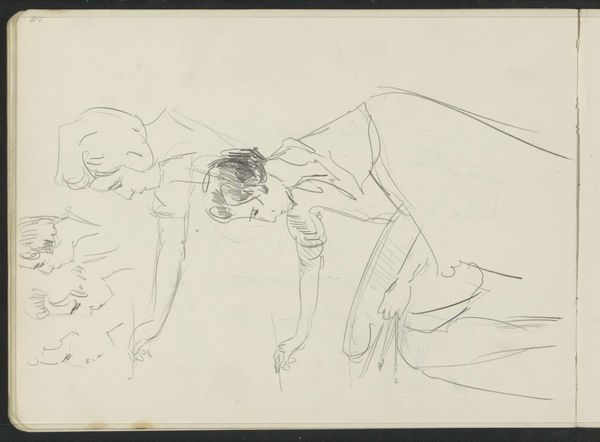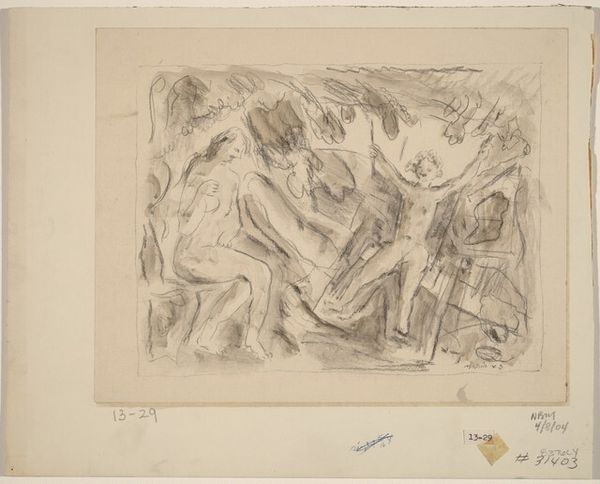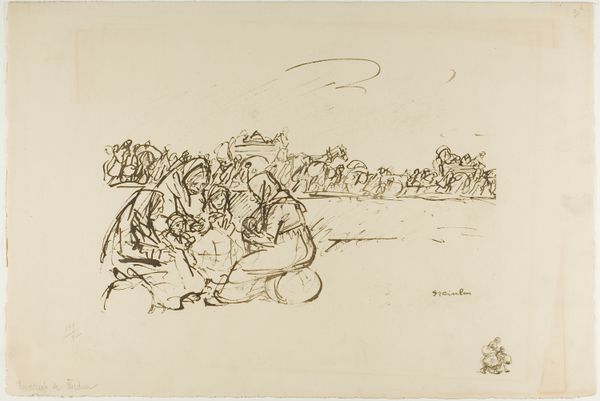
drawing, ink
#
drawing
#
figuration
#
ink
#
genre-painting
#
modernism
Dimensions: height 194 mm, width 211 mm
Copyright: Rijks Museum: Open Domain
Curator: I'm drawn to the almost monumental simplicity of this drawing. Editor: Indeed. Leo Gestel's "Three Farmers and a Farmer's Wife Weeding" delivers its scene with starkness, doesn't it? An ink drawing done anytime between 1891 and 1941, a rather broad timeframe that indicates some difficulty in pinning down its precise context. The work has been graciously housed at the Rijksmuseum for many years. What particularly catches your eye about its seeming simplicity? Curator: The bold lines mostly. They feel raw, unrefined. There’s very little shading or nuance. It reduces labor to its barest visual essence. This aligns, perhaps, with modernist ideas that often sought to return to primitive or essential forms, rejecting academic embellishments and ideas about labour and poverty. Editor: A fitting point. Looking at how he rendered these figures, each absorbed in labor, I see a rhythm in the bent postures and the clustering of bodies that suggests a deeper, communal connection to the land. Semiotically speaking, the emptiness creates room for other interpretations related to this socio-political context of field labour. Curator: But consider that absence. The facelessness, the almost grotesque distortion of the figures. It seems to critique rather than romanticize rural life. I am almost repulsed by the lack of humanity in the work. Are we, perhaps, looking at a statement on the dehumanizing aspects of agricultural toil, rendered as a social ill by Gestel’s deliberate reduction of his figures to their toil alone? Editor: That’s valid. Perhaps Gestel employed that simplicity—what might be deemed lack of nuance—to heighten other sensations. What appears to be unrefined can become deeply affecting and immediate, urging reflection from us by simplifying a narrative we assume is well understood and pleasant. The minimalist details could, perhaps, reflect the monotonous grind and drudgery that would define such lives. Curator: That makes a lot of sense; now I have to reflect on the historical backdrop to the image a bit further and reevaluate my position in the present. Thank you for those useful remarks. Editor: And I thank you in turn for the valuable social and political insights surrounding Gestel's time. Together, we have hopefully highlighted the richness present within a seeming simplicity.
Comments
No comments
Be the first to comment and join the conversation on the ultimate creative platform.
